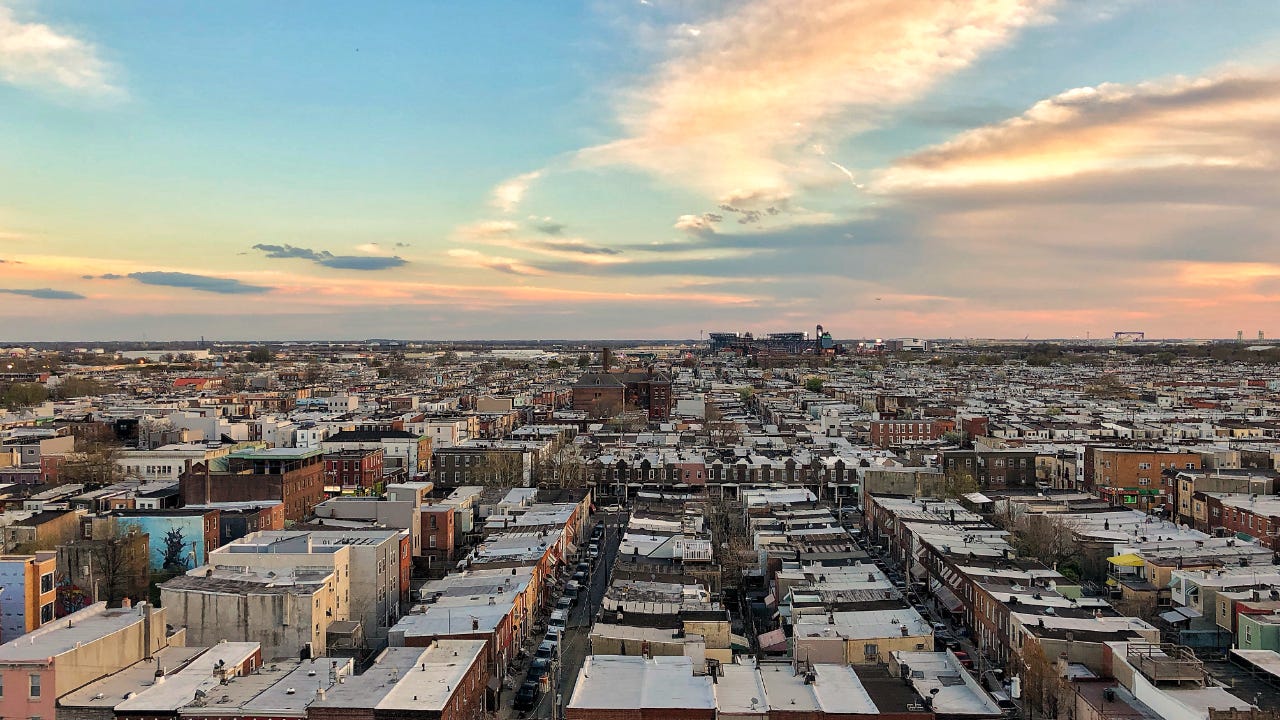What is redlining? The history of racism in U.S. real estate

The Bankrate promise
At Bankrate we strive to help you make smarter financial decisions. While we adhere to strict , this post may contain references to products from our partners. Here's an explanation for .
Key takeaways
- Redlining was a real estate practice in which certain neighborhoods were designated as high-risk, largely due to racial demographics, and loans on properties there were denied.
- Ostensibly intended to reduce lender risk, the practice institutionalized racial bias and limited homebuying opportunities for Black Americans.
- Though redlining is now illegal, its legacy persists, with ongoing impact on home values, homeownership and wealth.
The days of legally sanctioned race-based housing discrimination are thankfully behind us. But that hasn’t stopped it from continuing to happen: The legacy of attitudes and practices that kept nonwhite citizens from achieving homeownership remains.
Even today, segregation persists in many areas and mortgage borrowers of color often get charged higher interest rates. This can be traced in part to redlining, a federal policy dating from the 1930s, which made it more difficult for nonwhite buyers to purchase homes and codified racist attitudes in real estate. Here’s more on the history of redlining’s complex impact on real estate in America.
What is redlining in real estate?
Redlining, both as a term and a practice, is often cited as originating with the federal Home Owners’ Loan Corporation (HOLC), a government agency created during the 1930s New Deal intended to aid homeowners who were in default on their mortgages and in foreclosure. HOLC created a system to assess the risk of lending money for mortgages within particular neighborhoods.
Color-coded maps were created and used to decide whether properties in that area were good candidates for loans and investment. The colors indicated the lending risk level for properties — areas outlined in red were regarded as “hazardous” or high risk, hence the term “redlining.”
Redlined areas typically had a high concentration of African American residents and other minorities, reinforcing segregation. Historians have charged that private mortgage lenders and even the Federal Housing Administration (FHA) used these maps, or developed similar ones, to set loan criteria, with properties in redlined areas incurring higher interest rates or not qualifying at all. In fact, according to the Federal Reserve, “the FHA’s 1938 Underwriting Manual emphasized the negative impact of ‘infiltration of inharmonious racial groups’ on credit risk.”
“This practice was widespread and institutionalized, and it was used to discriminate against minorities and low-income communities,” says Sam Silver, an agent with eXp Realty in Santa Clarita, California.
Impact of redlining on real estate
Following World War II, the U.S. had a huge demand for housing, as many returning service members wanted to settle down and start families. The Servicemen’s Readjustment Act of 1944 offered benefits to returning veterans, including low-interest mortgages, essentially empowering Uncle Sam to back lenders and developers.
“That lower risk to lenders resulted in lower interest rates, which granted middle-class people the ability to borrow money to purchase homes,” says Rajeh Saadeh, a real estate attorney in Bridgewater, New Jersey. “With the new lending policies and larger potential homeowner pool, real estate developers bought huge tracts of land just outside of urban areas and developed them by building numerous homes, turning the areas into today’s suburbs.”
However, many of these new developments had restrictions that prohibited Black Americans from purchasing within them. Additionally, some areas within cities, already heavily populated by minorities, were redlined, making them ineligible for federally backed mortgages (which effectively meant ineligible for affordable mortgages). Consequently, people of color, including Black service members coming home from serving their country, could not get loans to buy in the suburbs, nor could they borrow to purchase homes in areas in which they were concentrated.
“Redlining was part of a systemic, codified policy — by the government, mortgage lenders, real estate developers and real estate agents as a bloc — to deprive Black people of homeownership,” Saadeh says. “The ramifications of this practice have been generational.”
The (official) end
Redlining as an official practice ended with the passage of the Fair Housing Act in 1968, which specifically prohibits racial discrimination in the housing industry and among professionals engaged in renting, buying, selling and financing residential properties. The Act’s protections were extended by the Equal Credit Opportunity Act (1974) and the Community Reinvestment Act (1977).
But even today, the damage is still felt. In 2021, the Department of Justice launched a modern Combating Redlining Initiative, which announced in October 2023 that it had secured more than $107 million in relief funds for communities of color that have been impacted by the practice. At that time, U.S. Attorney General Merrick Garland said that the initiative was still actively investigating more than two dozen redlining cases across the country.
Redlining’s ongoing legacy
Although there’s no official federal risk map anymore, bias can still unfortunately enter into mortgage lenders’ risk assessments. “Lenders can use algorithms and big data to determine the creditworthiness of a borrower, which can lead to discrimination based on race and ethnicity,” says Silver. “Also, some real estate agents may steer clients away from certain neighborhoods based on their racial makeup.” This practice, known as steering, is also now illegal.
Bias also impacts the home appraisal industry. Because home appraisals look at past property value trends in neighborhoods, they reinforce redlining discrimination by keeping real estate prices lower in historically Black neighborhoods. That, in turn, makes lenders assume they’re taking on more risk when they extend financing in those areas.
Even without conscious bias, the legacy of redlining — and its impact on the accumulation of assets and wealth — can put nonwhite loan applicants at a disadvantage. As a result, it can still be more difficult for Black borrowers to qualify for mortgages, and more expensive for those who do, because they’re often charged higher interest rates.
Several studies have tied redlining to continued racial disparity. These include:
- A 2022 study by FiveThirtyEight showed that almost all formerly redlined zones in America remain disproportionately Black. Formerly redlined areas also tend to have older housing stock and command lower rents; these less-valuable assets contribute to the racial wealth gap.
- FairPlay AI’s “State of Mortgage Fairness Report” in 2020 found that equality in mortgage lending is little better today than it was 30 years ago. In 1990, it found, Black mortgage applicants obtained loan approvals at 78.4 percent of the rate of white applicants; by 2021 that figure had risen, but only to 84.4 percent.
- A National Fair Housing Alliance report from 2020 revealed that Black and Hispanic/Latino renters were more likely to be shown and offered fewer properties than white renters.
“Redlining shut generations of Black and brown homebuyers out of the market,” says Saadeh. “And when members of these communities did overcome the barriers to purchasing homes, redlining diminished their capacity to generate wealth from the purchase. To this day, redlining has depressed property values of homes owned in minority communities. The enduring legacy of redlining is that it has blocked generations of persons of color from accessing a pathway to economic empowerment.”
What can be done to help?
The current housing financing system is built on the foundations that redlining left in place. To decrease the effects of redlining and its legacy, it must address the underlying biases that led to these practices.
“This can be done through Fair Housing education and training of real estate professionals, increased enforcement of Fair Housing laws and investment in communities that have been historically redlined,” says Silver.
In addition, financial institutions could adjust their underwriting practices and algorithms to more fairly evaluate nonwhite loan applicants. For example, in late 2022, Fannie Mae announced it had adjusted its automated Desktop Underwriter system — widely used by loan officers — to consider bank account balances for applicants who lack credit scores. Fannie Mae and Freddie Mac now may also consider rent payments as part of borrowers’ credit histories.
Such efforts won’t cancel out the effects of redlining overnight, of course. But they can help more people achieve a key piece of the American dream.
How to file a complaint
If you believe you are the victim of redlining or another sort of housing discrimination, you can file an online complaint with the U.S. Department of Housing and Urban Development or call (800) 669-9777. You can also contact the National Fair Housing Alliance for assistance.
FAQs
-
Part of the Civil Rights Act of 1968, the Fair Housing Act protects people from discrimination when they are renting, buying or selling a home, getting a mortgage, seeking housing assistance or engaging in other housing-related activities.
-
The Fair Housing Act officially outlawed the practice of redlining in 1968. But despite being illegal, redlining and discriminatory housing practices still persist to this day, many of which are successfully prosecuted by the Justice Department.
Related Articles




How the home appraisal gap makes homeownership more difficult and costly for Black families